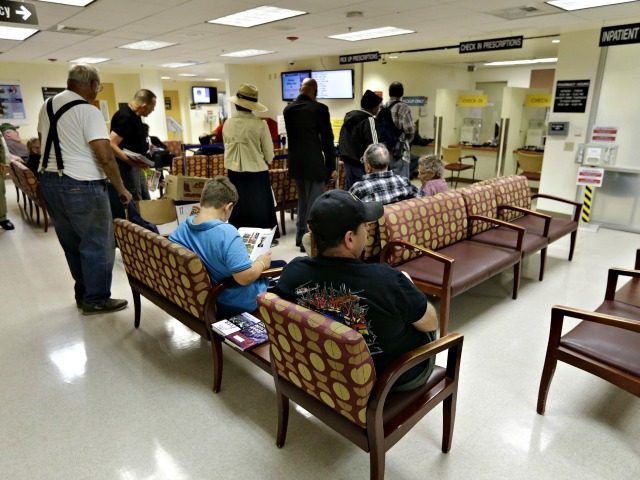A new survey finds the wait time for new patients seeking an appointment with a physician in 15 major cities in the United States has risen 30 percent since 2014.
The survey, conducted by national physician search firm Merritt Hawkins, analyzed the responses from 1,414 doctors’ offices. Wait times for new-patient appointments were observed in five medical specialty areas: cardiology, dermatology, obstetrics/gynecology, orthopedic surgery, and family medicine.
According to a press release from Merritt Hawkins, a company of AMN Healthcare, “It now takes an average of 24 days to schedule a new patient physician appointment in 15 of the largest cities in the U.S., up from 18.5 days in 2014, 20.5 days in 2009 and 21 days in 2004, previous years the survey was conducted.”
“Physician appointment wait times are the longest they have been since we began conducting the survey,” said Mark Smith, president of Merritt Hawkins, in a statement. “Growing physician appointment wait times are a significant indicator that the nation is experiencing a shortage of physicians.”
The survey indicates that Boston, Massachusetts, is encountering the longest average new-patient wait time of the 15 metropolitan areas: 109 days to see a family physician; 52 days to see a dermatologist; 45 days to see an OB/GYN; 45 days to see a cardiologist; and 11 days to see an orthopedic surgeon. The data suggest the average wait-time in general for new patients in Boston is 52 days.
Average wait times for new patients in other major U.S. cities are: Dallas – 15 days; Philadelphia – 37 days; Portland – 28 days; Seattle – 28 days; Denver – 27 days; Los Angeles – 24 days.
The 2017 survey also studied wait times for new patients in mid-size cities. Data show the average wait time in cities with approximately 90,000 to 140,000 people is 32 days, or 33 percent longer than in the largest cities.
A list of all cities included in the survey can be viewed in the report.
“Finding a physician who can see you today, or three weeks from today, can be a challenge, even in large urban areas where there is a relatively robust supply of doctors,” said Smith. “The challenge becomes even more difficult in smaller communities that have fewer physicians per population.”
Merritt Hawkins suggests the onset of Obamacare – which is essentially an expansion of government-funded Medicaid – is tied to the failure of many Americans to obtain prompt health care.
The survey also found that physicians accepting Medicare and Medicaid reimbursement as payment is not in keeping with the number of patients who expect to use government health insurance as their third-party payer.
In the largest cities, the average rate of Medicare acceptance among doctors is 85 percent, while the rate is 81 percent in the mid-size cities.
Physicians in the largest metropolitan areas are accepting Medicaid at a rate of only 53 percent, and, in the mid-size cities, 60 percent. The data suggest that many Americans who are living in cities and have purchased insurance plans through Obamacare are therefore not having access to health care, even though they have insurance coverage.
“More physicians will need to be trained, access to other types of providers expanded, and emerging technologies employed to ensure that health care delayed does not become health care denied,” Smith said.
However, Dr. Gerard Gianoli, a specialist in neuro-otology and skull base surgery, recently observed to Breitbart News that Obamacare’s increase in the number of Americans on government-funded health insurance is not an achievement.
“The vast majority – 85 percent – of those who have signed up for insurance through the Obamacare exchanges are individuals who would have previously qualified for Medicaid but hadn’t applied,” he said. “Why? Because they simply didn’t need it. They weren’t sick.”
“So, to claim that this is some huge accomplishment to have these folks sign up for insurance and forcing the taxpayers to foot the bill is a travesty,” Gianoli added. “It is simply sending money to the insurance companies for no purpose other than to improve their bottom line at the expense of the taxpayer.”

COMMENTS
Please let us know if you're having issues with commenting.